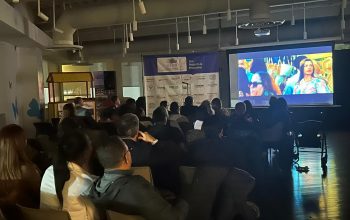news
Studies Prove Correlation Between Climatic Variation and Disease
August 23, 2007
David Joa, doctor at the Centro de Enfermedades Tropicales (Tropical Disease Center), offered this diagnosis when referring to climate change effects in dengue fever and malaria in a dissertation that began with a study developed in Dominican soil.
“This
study’s results prove a clear non-linear relationship between changes in climatic variations and changes in the behavior pattern for both diseases in different ways”. This was the first conclusion drawn by David Joa, from the Tropical Disease Center when presenting the results of a study about dengue fever and malaria behavior.
study’s results prove a clear non-linear relationship between changes in climatic variations and changes in the behavior pattern for both diseases in different ways”. This was the first conclusion drawn by David Joa, from the Tropical Disease Center when presenting the results of a study about dengue fever and malaria behavior.
According to him, the results prove that dengue fever -and to a lesser extent- malaria,
are vulnerable to climate changes. The trend expected is an increase in disease cases. He presented his findings at a seminar about “Evidence of Climate Change in the Dominican Republic”, organized by the “Fundacion Global Democracia y Desarrollo” and its sister organization in the U.S., Global Foundation Democracy and Development
(GFDD).
are vulnerable to climate changes. The trend expected is an increase in disease cases. He presented his findings at a seminar about “Evidence of Climate Change in the Dominican Republic”, organized by the “Fundacion Global Democracia y Desarrollo” and its sister organization in the U.S., Global Foundation Democracy and Development
(GFDD).
The epidemiologist and coordinator of the National Program for Malaria Control stated that from 2001 until today, three studies have been developed in the country. The purpose of the research has been to identify climate associations, and changes and trends that cause favorable situations for the variation of dengue and malaria epidemiologic patterns. Furthermore, the studies’ objective is to create projections of
dengue and malaria future behavior if the current climatic change trends persisted.
dengue and malaria future behavior if the current climatic change trends persisted.
“The analyses show that the impact attributed to climatic stress caused by variations is significant and when combined with the hygienic-sanitary conditions in each specific region, they can inflict great risks”-he stated.
The phenomenon’s significance was proved
when he declared that “most identified entities will see an increase or important variations in the amount of cases registered as a consequence of climate change.”
when he declared that “most identified entities will see an increase or important variations in the amount of cases registered as a consequence of climate change.”
Regarding this issue, he explained that the importance of said increases doesn’t only lie in the total number of sick people, but also in the fact that disease cases will erupt in different months and seasons in relation with the current
behavior.
behavior.
He further explained some seasonal variations and trends that affect diseases as a consequence of future climate change and that are already present.
He also drew another relevant conclusion from this situation: “This can be considered an indication of the projections’ validity and consistency”.
For Joa, the future existence of diverse risk factors (age groups, urbanization level, immigration, demographic settlement types, among others) could exacerbate or subdue the described impact. In fact, he added, these factors can be considered uncertainty sources in other projections.
He specified that in terms of dengue, the studies show that the most vulnerable region will be Region I,
which includes Azua, San Cristobal, San Jose de Ocoa and Peravia provinces. There will be greater number of cases which will stress the situation when combined with their socioeconomic conditions and a high proportion of urban population.
which includes Azua, San Cristobal, San Jose de Ocoa and Peravia provinces. There will be greater number of cases which will stress the situation when combined with their socioeconomic conditions and a high proportion of urban population.
The influence of climate change in variations of dengue fever and malaria behavior is confirmed for the three regions analyzed. It’s clear to observe that the highest vulnerability is registered in Regions I and III where
risk levels ra
risk levels ra





